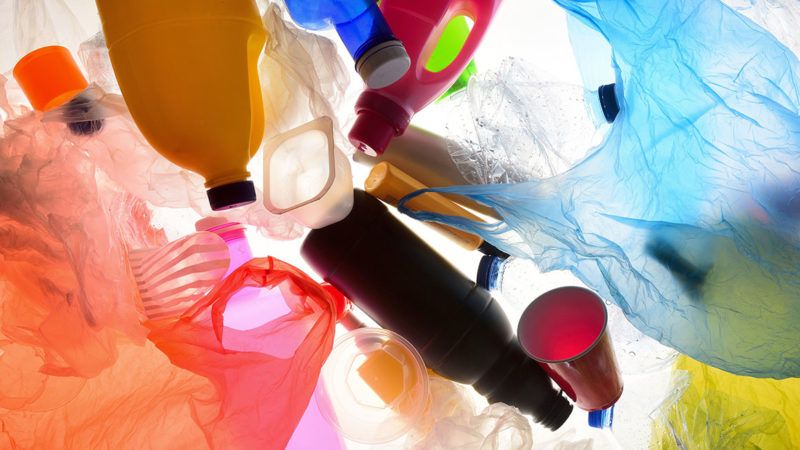Your Recyclables Are Going to the Dump
Rising rates of contamination, among other problems, have left material processing facilities with no willing buyers.

Baltimore County residents have had their perceptions about recycling shattered. In early February, news broke that for the last seven years, the county has been trashing the glass it collects as part of the county recycling program.
"There are numerous issues with glass recycling, including increased presence of shredded paper in recycling streams which contaminates materials and is difficult to separate from broken glass fragments, in addition to other limitations on providing quality material," a county spokesperson told The Baltimore Sun.
Glass recycling reportedly stopped in 2013, the same year the county opened a $23 million single-stream recycling facility, according to the Sun. Single-stream recycling refers to the practice of letting people put all their recyclables into one bin, then sorting it at processing facilities. It's more convenient for consumers than asking them to place their papers, plastics, and glass items in separate curbside containers.
Baltimore County fully adopted single-streaming by October 2010, part of a growing trend among municipalities trying to boost recycling rates. A study from the American Forest & Paper Association found that the population covered by a single-stream recycling service that included glass grew from 22 percent in 2005 to 73 percent in 2014. The thinking was that if you make recycling easier, more people will do it.
The trouble is that placing everything in the same bin increases the chances of contamination. Non-compatible materials get mixed together or coated with food waste. So a good deal of the glass isn't pure enough to ground down and ship to glass manufacturers. Chemical & Engineering News notes that only 40 percent of glass collected by single-stream services ends up being recycled into new products, compared to 90 percent of glass in multi-stream collection systems.
The cost of transporting heavy glass from recycling centers to glass manufacturers is also often prohibitively high, making the production of new, nonrecycled glass more economical.
Regardless of the material in question, the American recycling industry has been going through a crisis over the last several years. Rising rates of contamination and the effective closure of a major export market in China, which stopped accepting most American plastics in 2018, have left material processing facilities with no willing buyers. Many of the recyclables that are collected end up in landfills or incinerators.
That's exactly what's been happening to Baltimore County's glass. Yet county officials are still encouraging residents to recycle the stuff, fearful that people will fall out of the recycling habit. Ritual is apparently more important than reuse.
Rent Free is a weekly newsletter from Christian Britschgi on urbanism and the fight for less regulation, more housing, more property rights, and more freedom in America's cities.


Show Comments (40)